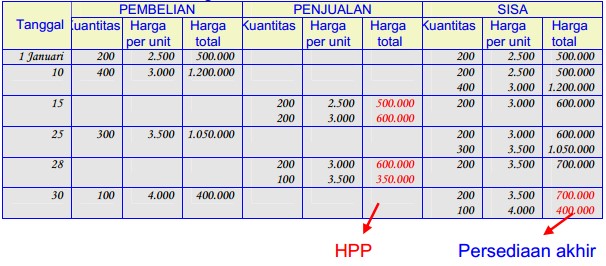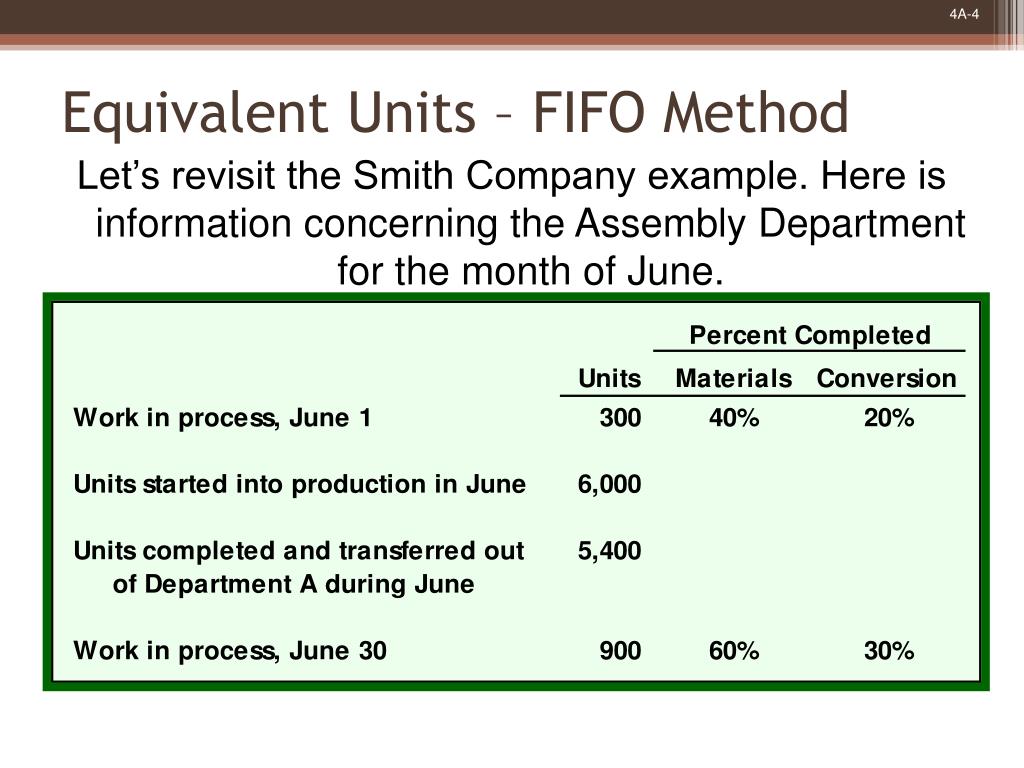
Using a perpetual system, it has real-time information about which site may have one in stock so the customer can go get his wrench quickly instead of driving from store to store looking for it. Inventory management software and processes allow for real-time updating of the inventory count. Often, this means employees use barcode scanners to record sales, purchases or returns at the moment they happen.
Statements are more transparent and it’s more difficult to manipulate FIFO-based accounts to embellish the company’s financials. FIFO is required under the International Financial Reporting Standards and it’s also standard in many other jurisdictions. The Statement of Financial Position (a.k.a Balance Sheet using Canadian ASPE accounting standards) presents the company’s total assets,…
As we shall see in the following example, both periodic and perpetual inventory systems provide the same value of ending inventory under the FIFO method. On the third day, we assign the cost of the three units sold as $5 each. This is because even though we acquired 30 units at the cost of $4 each the same day, we have assumed that the sales have been made from the inventory units that were acquired earlier for $5 each. In other words, the costs to acquire merchandise or materials are charged against revenues in the order in which they are incurred. The specific identification costing assumption tracks inventoryitems individually so that, when they are sold, the exact cost ofthe item is used to offset the revenue from the sale.
The remaining inventory assets are matched to assets that were most recently purchased or produced. On the other hand, weighted average perpetual constantly updates the weighted average cost. To determine the cost of ending Inventory using the Weighted Average Perpetual method will likely require us to create a table so that we can keep track of the continuously changing cost. The weighted average method weighs the average cost of Inventory, over the period.

And the inventory record allows you to determine the actual cost of goods sold for each sale. Under first-in, first-out (FIFO) method, the costs are chronologically charged to cost of goods sold (COGS) i.e., the first costs incurred are first costs charged to cost of goods sold (COGS). This article explains the use of first-in, first-out (FIFO) method in a periodic inventory system.
For the past 52 years, Harold Averkamp (CPA, MBA) has worked as an accounting supervisor, manager, consultant, university instructor, and innovator in teaching accounting online. Build a growing, resilient business by clearing the unique hurdles that small companies face. Synchronize sales, marketing, customer service and technical support activities. The value of the remaining inventory (50 apples) would be $55 (50 apples x $1.10 each). Specific inventory tracing is only used when all components attributable to a finished product are known.
After Corner Bookstore makes its third purchase of the year 2023, the average cost per unit will change to $88.125 ([$262.50 + $90] ÷ 4). As you can see, the average cost moved from $87.50 to $88.125—this is why the perpetual average method is sometimes referred to as the moving average method. The Inventory balance is $352.50 (4 books with an average cost of $88.125 each). With perpetual FIFO, live full service the first (or oldest) costs are the first costs removed from the Inventory account and debited to the Cost of Goods Sold account. Therefore, the perpetual FIFO cost flows and the periodic FIFO cost flows will result in the same cost of goods sold and the same cost of the ending inventory. It is practically impossible for most companies to track the flow of each and every inventory item.
Regardless of the type of inventory control process you choose, decision-makers know they need the right tools in place so they can manage their inventory effectively. NetSuite offers a suite of native tools for tracking inventory in multiple locations, determining reorder points and managing safety stock and cycle counts. Find the right balance between demand and supply across your entire organization with the demand planning and distribution requirements planning features. Perpetual and periodic systems require different tools and procedures around how employees document inventory, although they can be complementary.
The company then applies first-in, first-out (FIFO) method to compute the cost of ending inventory. Let’s say that you need to estimate the ending inventory from the current month. The values you need to know to calculate this are the gross profit as a percentage of sales, the total sales for the period, the beginning inventory for the period and purchases for the period. As shown below in the ledger, estimate the relative percentages of both COGS and gross profit for your total sales. From there, solve for the cost of goods sold, and then fill in the known values minus the COGS figure.
We keep picking units until we have accounted for the cost of all the units sold, in this case 245 units. In an inflationary environment, perpetual FIFO will result in the lowest possible cost of goods sold and the highest possible ending inventory valuation. This is because the oldest items in inventory were presumably purchased at the lowest prices, and are used first.